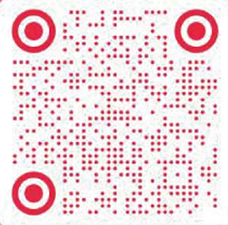Yuan Yuan likes painting at night, as do many artists. Perhaps it’s because the night is more peaceful and more stimulating; or because of the feeling of fragility and inspiration.
Yuan Yuan never gives herself a deadline for finishing a painting, but most of her artworks take thirteen nights to complete. Maybe this is predestined. During the rest of her time, Yuan Yuan is like many of her generation born in the ‘80s: not overly concerned with the pressures of life, floating at society’s edges, going back and forth between things and leaving room to change her mind.
For Yuan Yuan, the number thirteen is an entity, but within this entity each piece is independent. Thirteen nights is the sum of thirteen distinct periods of time. To reflect this, Yuan Yuan likes to repeat certain symbols on her canvas. It might be that she hopes to find, in the uniformity of repetition, a different substance, or that she hopes to use a numerical repetition to filter out melancholy. Maybe she uses repetition to gather strength, or maybe she uses repetition to deplete her energy.
What else might thirteen nights mean? The painter in Yuan Yuan doesn’t think about this question. However, the day Yuan Yuan decided to become an artist she necessarily began thinking about things other than merely painting.
Of course, a painter can also be an artist. In “The Thirteenth Night”, a novel by Italian writer Carlo Sgorlon, the psychic witch Veronica eventually nurtured the timid youth Nolberto to become a great artist, telling us that if a painter wants to become an artist, he needs more than simple rationality – he needs inspiration, fantasy and intuition. The skills that artists need are most active at night.
However, just as the night gives rise to an artist’s inspiration, it also fosters those with no homes to return to. Yuan Yuan’s studio is in the urban suburb, where many homeless gather. During the nights in when Yuan Yuan is creating her art, the homeless are idly passing their time.
What is the difference, Yuan Yuan wonders, between herself and them? As Yuan Yuan prepares for her first exhibition, she wants to invite those who accompany her during her nights of painting to come and create artwork with her. She wants to give them a home, listen to their stories. Beyond that, everything else is spontaneous. No script, no director, no actors. No one could control the development of the story--no one who can even control whether there is a story. No matter how wonderful the story is, it’s only one night. No matter how boring the story, it’s only one night. But for the homeless, what could be more important than the feeling of having a home for one night? This will be repeated for thirteen nights, just like the repeated symbols on Yuan Yuan’s canvas. If together they don’t form a grand story, it’s because there’s no plot, and no conclusion. In fact, the only reason why there are thirteen nights is because that’s the longest duration the museum could offer for this venue.
Some might say that thirteen, which represents the number of people at the last supper, is unlucky as it implies betrayal and calamity. Yuan Yuan counters that as long as there is betrayal in this world and that one could be betrayed. As long as there is calamity, it could happen to anyone. As long as we live lives free of calamity we are in fact lucky. Only when the possibility of sufferings disappears can we rid ourselves of the anxiety.
Yuan Yuan wants to create in her art a fantasy filled with warmth, which can bring some real warmth to her viewers. She hopes that bits and pieces of this warmth will accumulate and begin to dispel the anxiety. She believes in the power of repetition. Through endless repetition, the unseen can be seen, the unheard can be heard. As Ranciere’s theory of the politics of aesthetics goes, art realizes political equality through re-distribution of the sensible.
For Yuan Yuan, each of her thirteen nights is equal. She doesn’t see any particular night as a prelude to the next, or as a conclusion. But we still look forward to the inconclusive last night. In Sgorlon’s novel, ‘thirteen nights’ is a festival for the people of Red Mountain; the final, thirteenth night extends for days, gaining speed and size like an avalanche, with people day and night flowing together in merriment. In Ichiyo Higuchi’s story of the same name, the thirteenth night is a time when those who lament the bad luck in their lives are given a chance to see that others’ lives may be even worse. What will happen at the end of Yuan Yuan’s Thirteen Nights? Will it be a placid gathering or marked by self pity? It’s impossible to predict--perhaps it’s in the hands of the witch. In modern age, it is the artists who have taken on the jobs of witches and wizards. ——by Peng Feng











